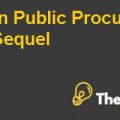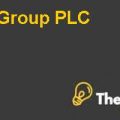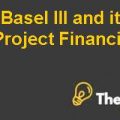
Introduction:
The report presents a case about Midland Energy Resources, which is a global energy company with operations in oil and gas exploration and production (E&P), refining and marketing (R&M) and petrochemicals. The management was concerned about the capital structure of the company and its divisions, which could have a substantial impact on the corporate treasury decisions. The report contains a detailed analysis of company’s cost of capital and an assessment of the use of unified hurdle rate for different divisions.
Problem Statement:
The management was concerned about the capital structure of the company and its three divisions, which had previously been criticized and its assumptions and inputs had previously been challenged.
Case Analysis:
The report contains a detailed analysis of the capital structure of the company and its three divisions. Further, it also includes pros and cons of using unified hurdle rate for different divisions. The report contains the following areas:
- WACC of Midland Energy Resources and its three divisions.
- Issues for Midland Energy Resources for using unified hurdle rate for different divisions.
- Goals of using different finance strategies.
WACC of Midland Energy Resources and its three divisions
Our analysis in Appendices 1 shows that the Midland Energy Resources had a WACC of 7.9%. In order to facilitate better calculation, reasonable assumptions had been made that the risk free rate was assumed to be on 30-years treasury bonds, assuming a highest yield to maturity. Further, taxes were considered as an average amount of taxes paid among the prior three year and the market risk premium was considered at 5%. Initially, unlevered beta had been calculated to eliminate the financial effect that amounts to 0.92, which was later on geared on the targeted debt to value ratio that results in a levered beta of 1.16. Further, the cost of equity and debt amounts to 10.76% and 6.60% respectively.
Further, our analysis in Appendices 2 shows that the WACC of Exploration & Production (E&P), Refining & Marketing (R&M) and Petrochemicals division were 7.73%, 9% and 7.56% respectively. Initially, average unlevered beta of comparable companies had been calculated for three divisions, which amounted to 0.93, 1.05 and 0.82 for E&P, R&M and Petrochemicals respectively and later on such betas were geared on the targeted debt to value ratio, which resulted in a total of 1.19, 1.24 and 1.02 respectively. Further, the cost of equity and debt for E&P, R&M and Petrochemicals were 10.94%, 11.2% & 10.1% and 6.58, 6.78% & 6.33% respectively.
Issues for Midland Energy Resources for using unified hurdle rate for different divisions
Midland Energy Resources has diversified business units, which are susceptible to different risks; if the company uses unified hurdle rate then the company will fail to consider risks of different business units because the risk profile of the divisions are different from one another, so the organization shall consider to use different rates for the evaluation of different investment proposals.
Midland Energy Resources shall consider to avoid the use of unified hurdle rate for the evaluation of different investment proposals because their may be a possibility that the company may invest in risky projects and such projects may even become further risky over time.
Further, the company is divided into three divisions that have different capital structure and operate in different respective industries, so the use of unified discount rate for each division may not accurately discount the cash flows of different projects. On the other hand, if the company is considering to invest on corporate level then the company can consider the use of corporate level WACC for its evaluation.
Goals of using different finance strategies
The overall goal of using different finance strategies was to enhance the value of shareholders by investing in new worthwhile opportunities across the globe and to evaluate the feasibility of the projects by discounting back to its cost of capital.
Overseas Growth
The majority of the earnings of Midland Energy Resources are generated from non-US investments. The strategy adopted by Midland Energy Resources for evaluating its projects are that it first converts the foreign currency in US Dollars and then apply an appropriate discount rate to evaluate the project. The objective behind using this strategy is to .............................
This is just a sample partial case solution. Please place the order on the website to order your own originally done case solution.












